Microplastics in water: is the plumbing industry culpable?
Plastics have become a familiar feature of the modern world, being used in everything from furniture and home plumbing systems to clothing and disposable water bottles.
The pace with which plastics have been adopted is undeniable, however recent evidence suggests our growing dependence on the material may have harmful consequences.
Plastic products have been found to leach tiny particles into the environment, which is especially concerning given their frequent use in piping systems that supply drinking water.
Below, we take stock of the latest research on microplastics in water and consider the key implications for the plumbing industry.
Microplastics in water
Learn about the different types of microplastics and find out how they enter the water supply through the degradation of plastic pipes.
Read MoreDangers of microplastics
Read up on the impacts of microplastics in water, not only on human health but also more broadly on food chains and the environment.
Read MoreReducing microplastics
Find out what measures can be taken to reduce microplastics in drinking water and discover alternatives to potentially hazardous plastic pipes.
Read MoreMicroplastics in water
Whether it’s water supply lines, natural bodies of water or disposable water bottles, virtually all sources of water have been found to contain microplastics. What’s more, the number of microplastics in water is increasing in line with rising plastic usage in wider society.
Below, we take a closer look at what microplastics actually are, the most common types found in drinking water and the ways they enter supply lines.
What are microplastics?
First coined as a term in 2004, microplastics are tiny particles of plastic debris measuring less than five millimetres in diameter that result from the breakdown and disposal of everyday plastic products like water bottles, carrier bags, cosmetics and clothing.
Microplastics are so small that it can be hard to properly grasp their scale. Shedding light on their size and widespread presence, a landmark study from 2024 found that the average litre-sized bottle of water contains roughly 240,000 tiny plastic particles.
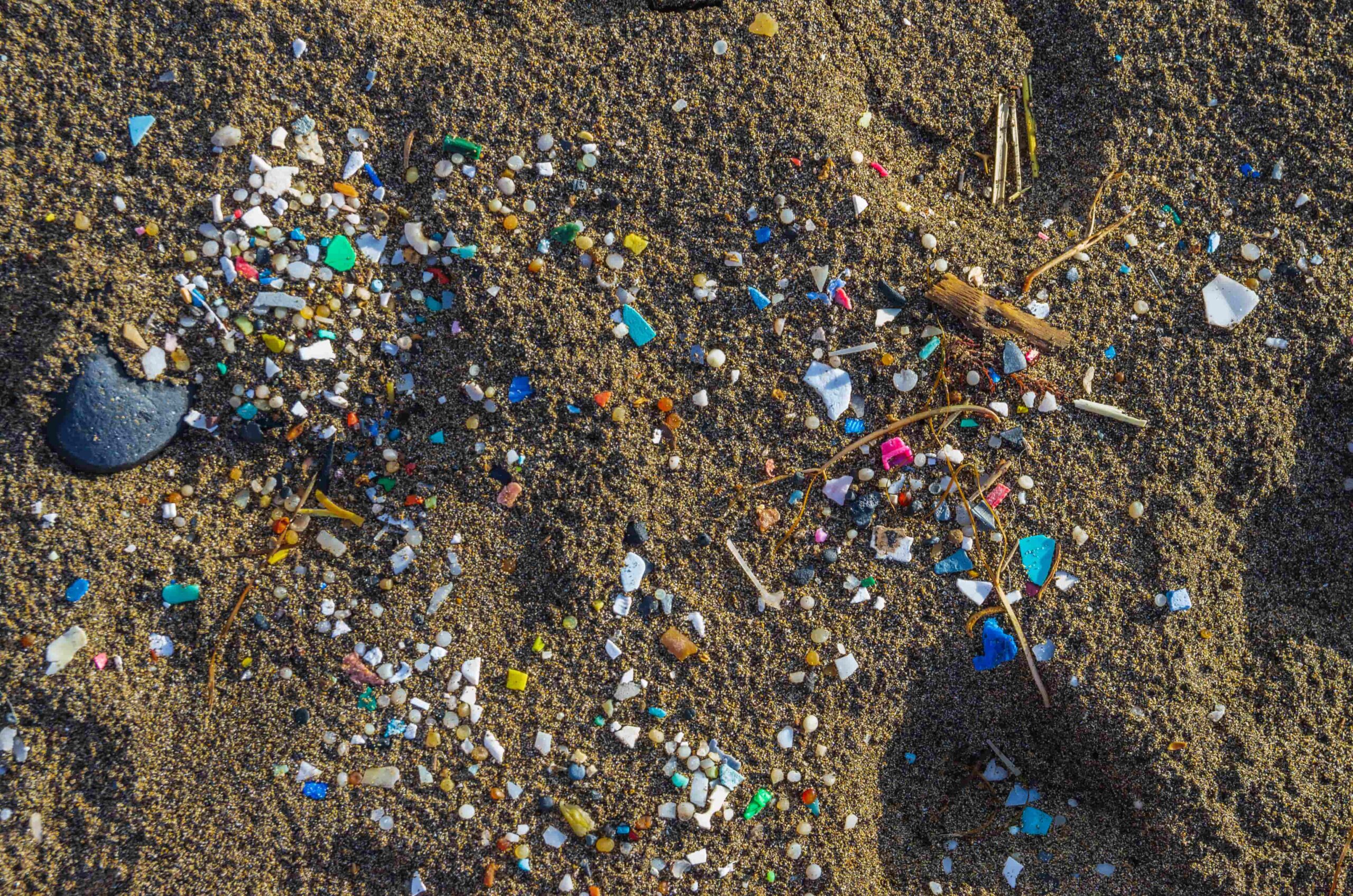
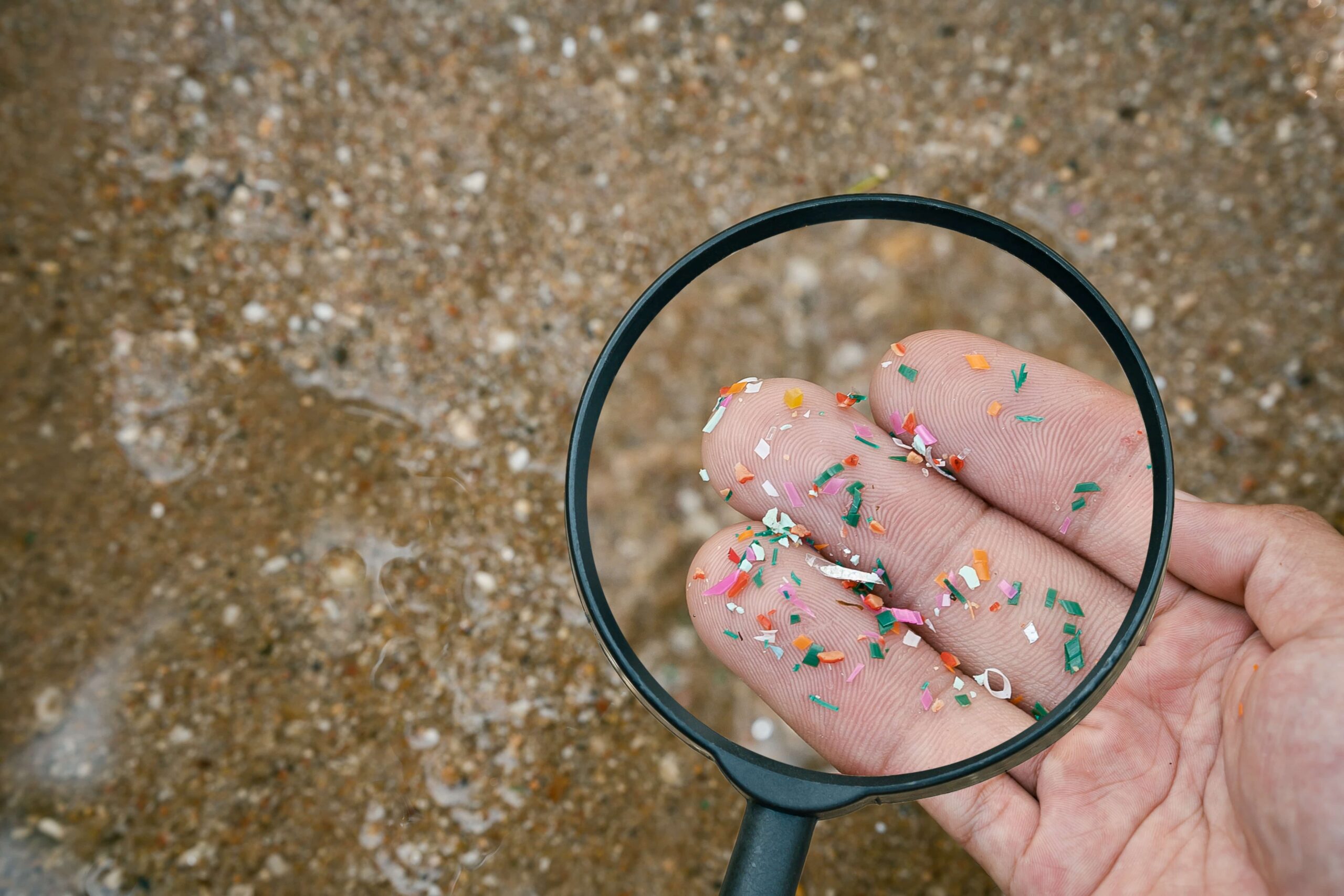
These figures put the number of microplastics in bottled water at about 10 to 100 times higher than previous estimates, suggesting our previous understanding of microplastics was – and likely still is – limited.
When you consider that over 13,000 different chemicals are used in the manufacture of commonly used plastics like polyethylene (PE) and polyvinyl chloride (PVC), the pervasiveness of microplastics comes as less of a surprise.
Through natural processes like oxidation or solar radiation, as well as everyday wear and tear like the squeezing of a water bottle while taking a sip, these particles break away into tiny pieces and enter the environment.
Types of microplastics
In scientific circles, microplastics are divided into two groups: primary and secondary. Primary microplastics come from objects intentionally manufactured to a small size, like microbeads found in cosmetic products, while secondary microplastics break away from larger plastic items.
Most microplastics found in the environment fall into the bracket of secondary microplastics as they stem from waste products like water bottles, carrier bags and discarded packaging, which break down into small fragments through weathering.
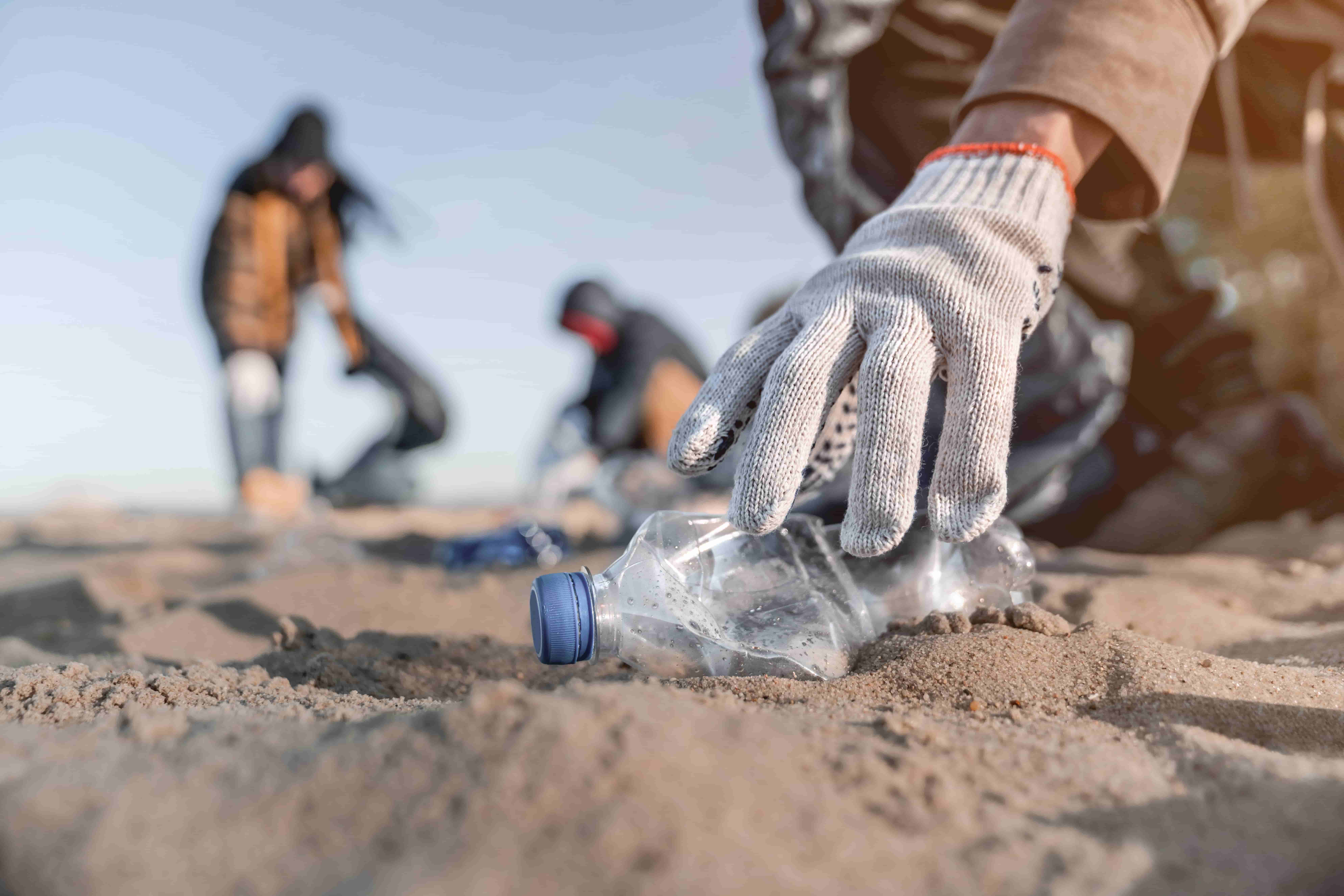
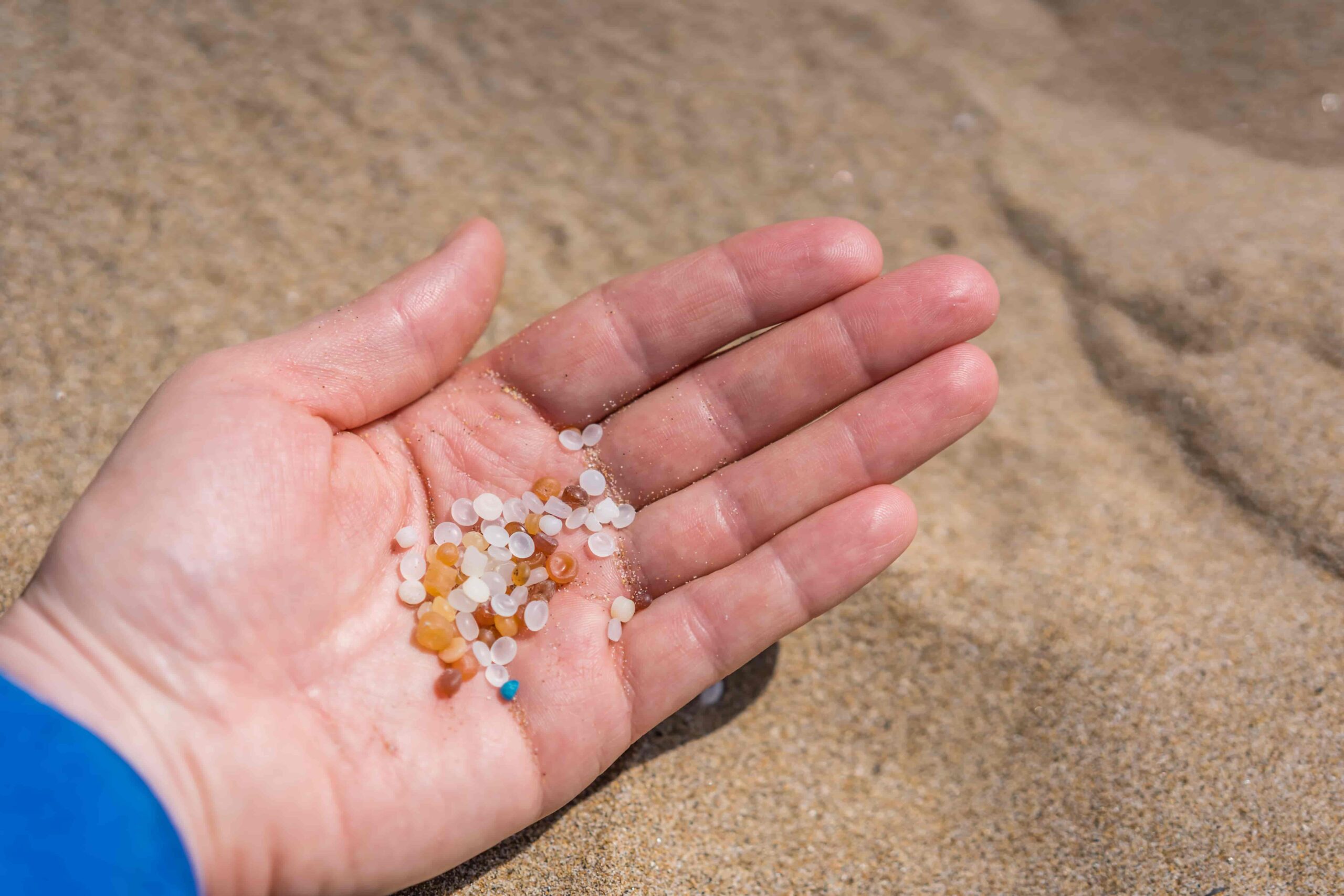
A wide range of plastic products have been found to leach microplastics into the environment, though the types of microplastics found in these products will vary depending on the material used to manufacture the original item.
For example, the particles shed by a polyethylene terephthalate (PET) water bottle will be different to those that originate from a polyvinyl chloride (PVC) pipe, with some plastic materials known to contain higher concentrations of potentially harmful substances than others.
Plastic particles in water
At present, drinking water is widely regarded as one of the main sources of microplastics within the human body. It’s easy to see how disposable water bottles can shed plastic particles, but what is more alarming is just how common microplastics are in tap water.
A study from 2017, which analysed samples from more than a dozen countries including the UK, US, Germany and France, estimates that 83% of the world’s tap water is contaminated with tiny plastic fibres.
Cross-examination of samples from more than 20 studies found that people who drink tap water ingest around 4,000 plastic particles per year.
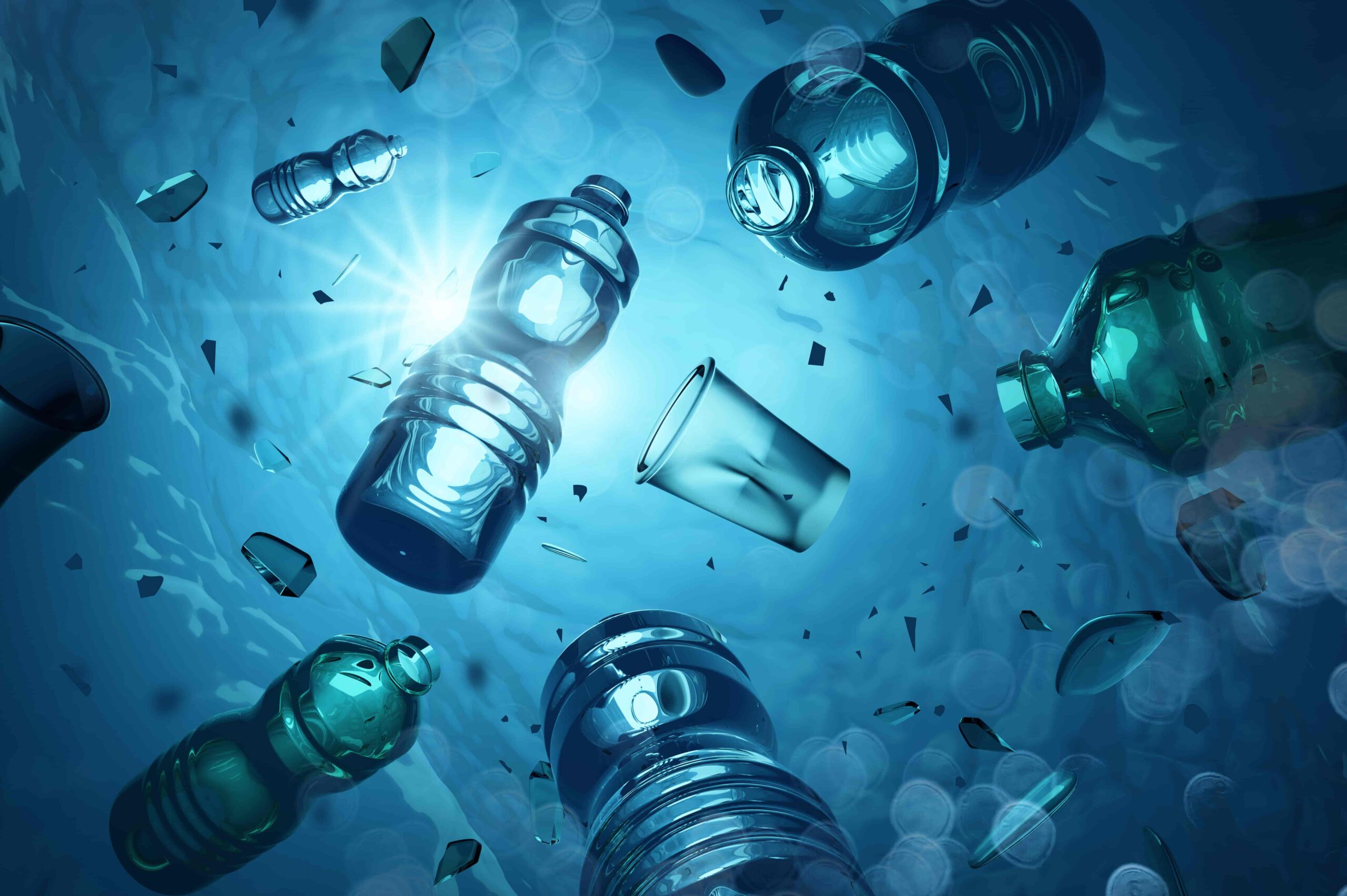

Many of these microplastics come from waste products that have entered the water supply through rivers and oceans, however there is another source that lies much closer to home: the pipes that actually carry the water.
Research indicates that commonly used PE and PVC pipes crack and peel as they age, releasing tiny particles into water in the process. Another study found that the number of particles in drinking water increases as water moves through pipes made of plastic.
Most new-build homes and retrofit projects use plastic pipes as standard for plumbing installations, providing a direct route for plastic particles to enter tap water and exposing occupants to a lengthy list of potential health risks.
Learn more about microplastics shedding from plastic pipes
The dangers of microplastics
Laboratory tests are linking microplastics to a growing number of health issues, including endocrine disruption, decreased reproductive health and damage to the gut, lungs and brain. On a broader scale, microplastics have also been found to negatively impact food chains and marine ecosystems.
Below, we take a closer look at current research that explores the effects of microplastics on human health and the environment.
Impacts on human health
Scientists have long voiced concerns about the potential health impacts of microplastics, however any direct links to changes in the body have been hard to prove. In the last few years, though, there has been a surge in interest and experiments, laying bare many of their toxic effects.
The threat of microplastics lies in their size, with the particles small enough to pass through biological barriers in the gut, brain, skin, testes, placental tissue and respiratory tract. Once they have entered the body, microplastics accumulate in different tissues and organs.
Gut function
One area of focus for researchers has been gut health, with studies finding that microplastics alter the structure and functionality of naturally occurring gut microbiota that regulate digestion and support the immune system.
A study on the impacts of microplastics in freshwater flatworms noted shifts in the balance of gut microbes, inducing an effect called dysbiosis, which is associated with cancer, diabetes and irritable bowel syndrome.
There is also evidence of microplastics potentially damaging the mucus layer in the colon, which is vital for maintaining intestinal health. Another study found that microplastics impair the immune function of microphage cells that expel contaminants from the body.
Lung health
Plastic particles have been identified deep in the lungs of living humans, potentially damaging lung tissue cells and leading to a wide range of serious health issues including cancer, asthma, pneumonitis and pulmonary fibrosis.
One study indicates microplastics alter the physical composition of DNA of lung cells, fracturing chromosomes and in some cases resulting in whole chromosome loss, while another found that microplastics led to higher levels of reactive oxidative stress in lung cells.
Damage to cell tissues from inhaled plastic particles has also been linked to pulmonary fibrosis. Finally, microplastics may also lead to increases in cytokines, exacerbating long-term lung conditions like asthma and chronic obstructive pulmonary disease.
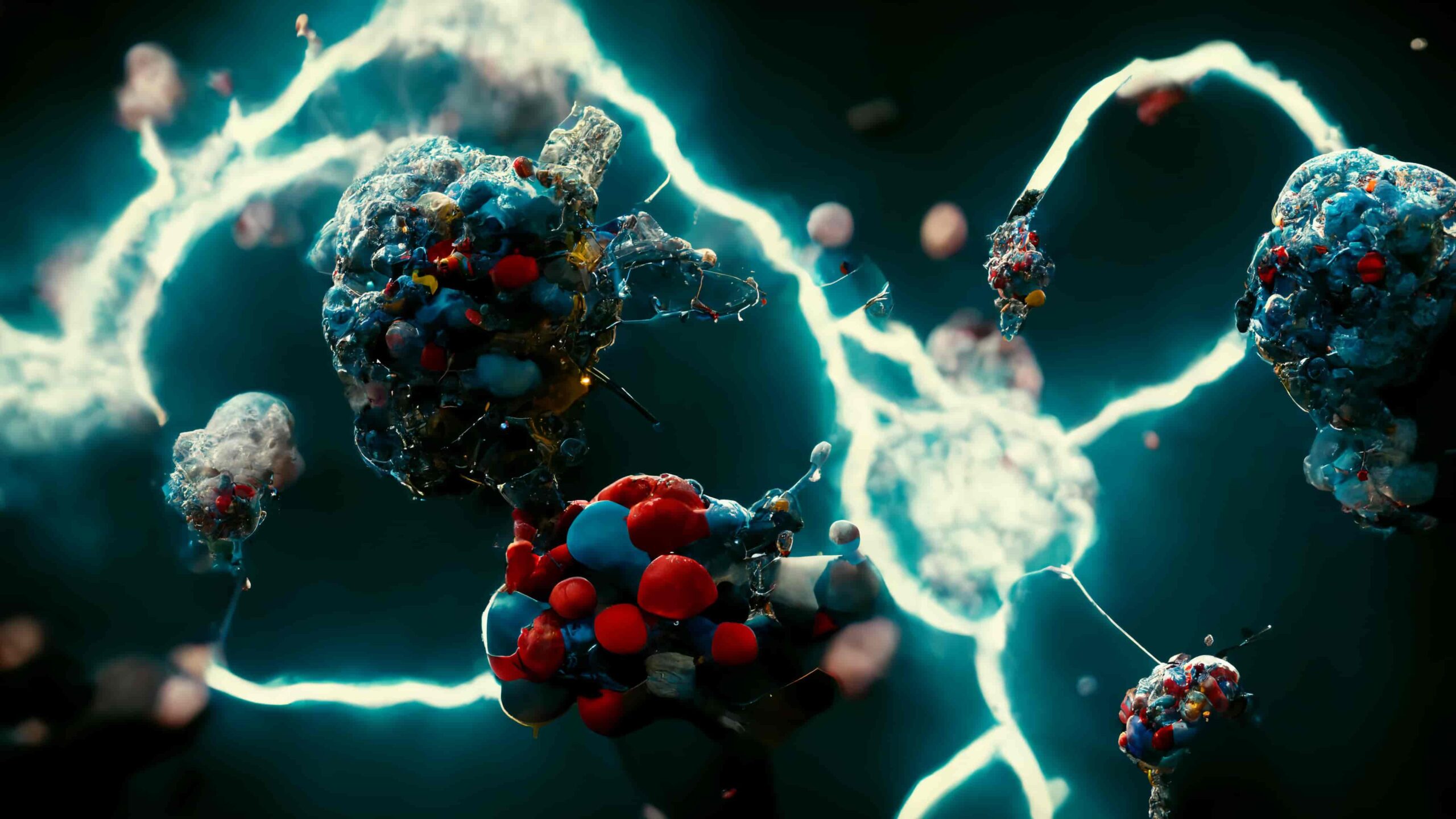
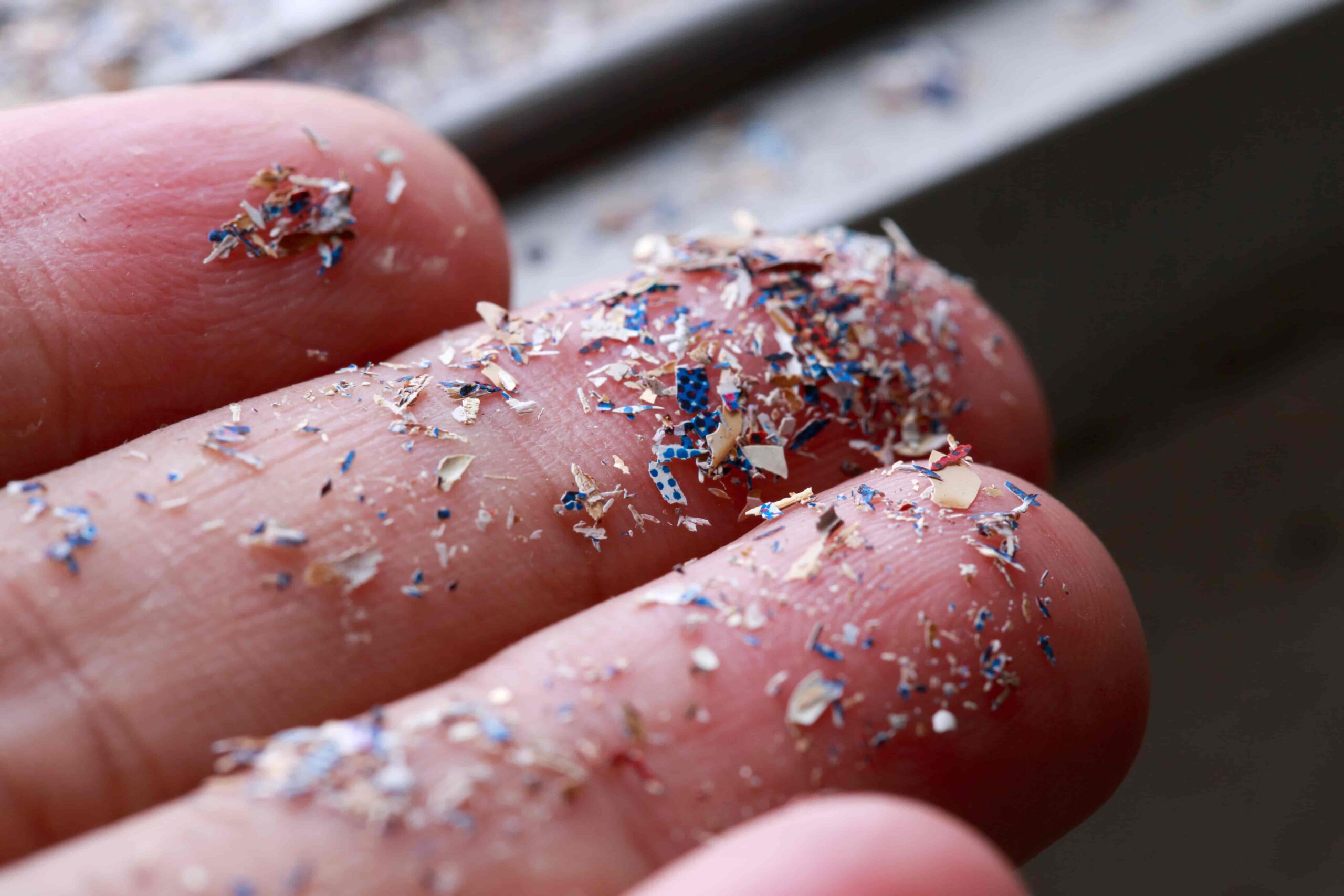
Brain function
There is evidence to suggest that microplastics can reach the brain after initially entering the body through the gut or lungs, with early findings showing that plastic particles move through the bloodstream and infiltrate the brain via the blood-brain barrier.
Once microplastics are inside the brain, they disrupt cognitive function and may also be responsible for short-term memory impairment. Increases in oxidative stress can also damage cells, leaving the brain more vulnerable to neuronal disorders like Alzheimer’s and Parkinson’s.
Reproductive issues
Plastic particles can also reach the testes and ovaries through the bloodstream, impacting the quality and function of reproductive cells, damaging eggs and sperm and resulting in a number of foetal development problems.
Microplastics have been observed in human placental tissue, with interruptions caused by plastic particles potentially leading to increases in adverse pregnancy outcomes. Endocrine-disrupting chemicals present in many plastics have also been linked to changes in fetal neural development.
Some scientists point to microplastics as a contributing factor to declining sperm counts observed globally. Studies show that plastic particles lead to structural defects in sperm, including two-tailed, hookless and swollen-neck deformities.
Effects on the environment
Microplastics are not only a major concern for human health. Travelling through air, water and food, harmful plastic particles are infiltrating all kinds of ecosystems, disrupting food chains and threatening biodiversity.
While the scale of their environmental impact is not yet fully known, the early signs show that microplastics reduce the quality of soil, water and other essential nutrients upon which different habitats are built, while also directly affecting the health of plants and animals.
Oceans, rivers and lakes
Much of the research into the environmental effects of microplastics has so far focused on oceans and rivers, particularly marine ecosystems.
In oceans, plastic particles have been observed across the food chain. Zooplankton, which sit at the bottom of the hierarchy, readily ingest microplastics. The particles are then passed up the chain through predation.
Ingestion of microplastics among fish and other sea creatures has been linked to a decline in feeding behaviour and fertility, as well as structural damage to the intestines, gills, liver and brain, which can be lethal to marine life.
While less research has been done on rivers and lakes, it is likely that they are already being impacted by many of the same effects seen in marine environments, with one study of rivers in South Wales finding plastic particles in the gut of various species.
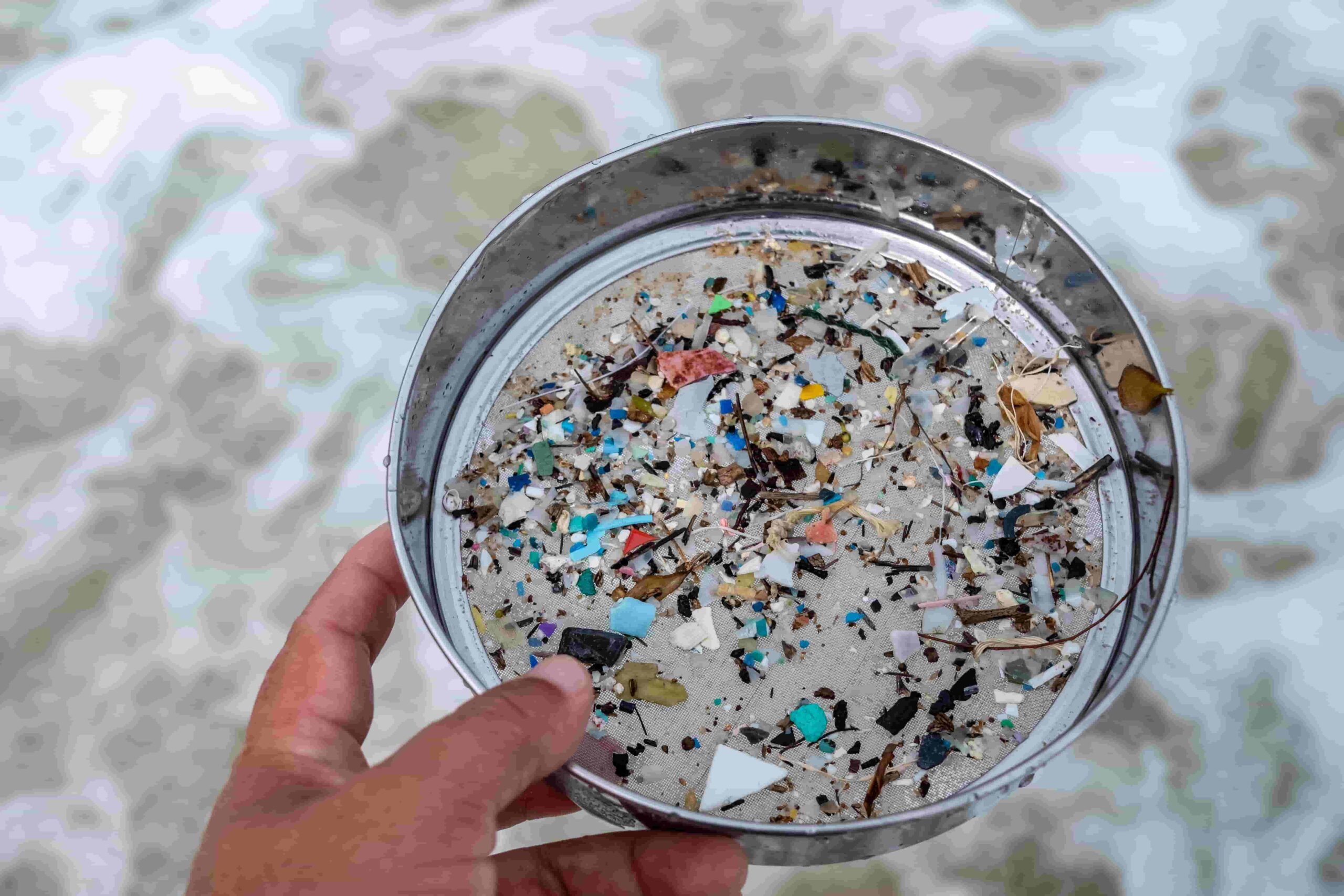
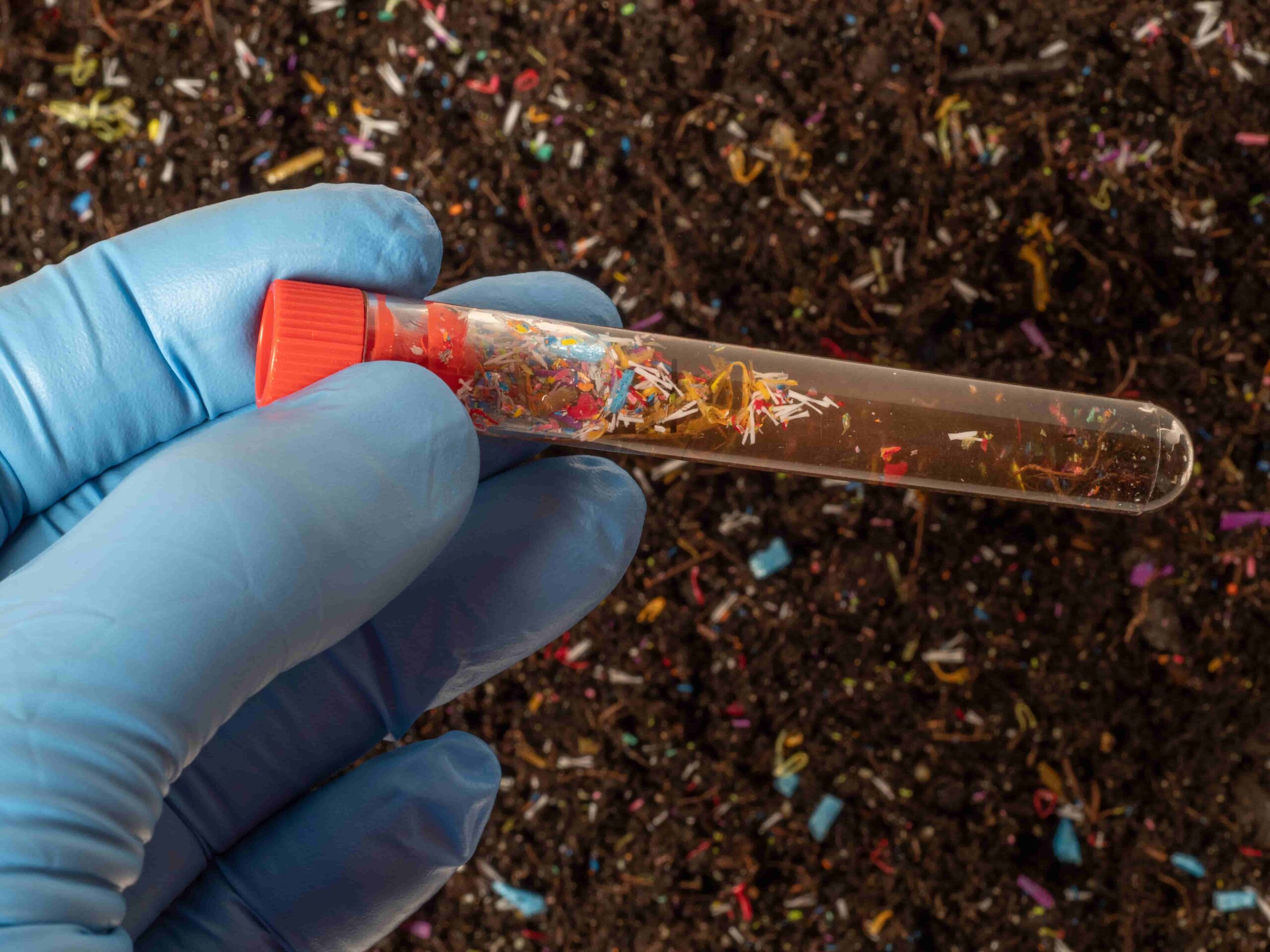
Land environments
On land, microplastics have been linked to adverse changes in the chemical structure of soil. These include higher pH levels, changes in enzymatic activities and a limited capacity to hold water, all of which limit the soil’s fertility.
Further up the soil food web, microplastics have also been shown to have devastating impacts on mites, worms and other soil-dwelling creatures. In plants, studies have found that microplastics are responsible for reduced nutrient uptake and root growth.
Terrestrial pollution of microplastics not only affects plant and animal life but also threatens our own food security by negatively impacting crop quality and yield. Foods contaminated with microplastics serve as another major source of plastic particles in the human body.
The air and atmosphere
Too small to see but light enough to be carried by wind, microplastics contaminate the air we breathe. In fact, it’s estimated that up to 25 million metric tonnes of microplastics are transported around the world each year by fog, snow, ocean air and sea spray.
Water samples collected from high-altitude summits in Japan found that microplastics can influence cloud formation. The study’s findings suggest microplastics encourage ice clouds to form, which are generally associated with a warming effect on the planet.
Tiny plastic particles have even been found as high as the earth’s atmosphere, where they may directly affect the amount of radiation that gets trapped or reflected from the sun, potentially exacerbating the impact of climate change.
Learn more about the damaging impacts of plastic in society
Reducing microplastics in water
From food, soil and air to clothes, tap water and human blood, microplastics are found virtually everywhere. Reducing their impact on human health and the environment therefore requires effort and collaboration between individuals, businesses and governments around the world.
Specifically focusing on the issue of plastic particles in water, microplastics have been shown to enter the water supply at various stages:
- Plastic waste breaks up into very small particles, leaking into rivers, lakes, reservoirs and other freshwater sources that are used to supply drinking water;
- Microplastics are shed by plastic pipes that are used to supply drinking water to buildings and carry wastewater to treatment facilities;
- Tiny plastic particles break away from water bottles made of plastic.
At present, measures for removing microplastics from water include filtration and substituting plastic pipes and water bottles for alternative materials.
Filtering microplastics from water
Growing awareness of microplastics and their potential risks has prompted a series of studies into the possibility of filtering them from water. At present, however, most filtration systems are unable to separate microplastics from drinking water due to their minute size.
There is good reason to believe that filtration technology will develop in future, which could enable water companies to remove microplastics from water at treatment plants before it is transported to local supply lines.
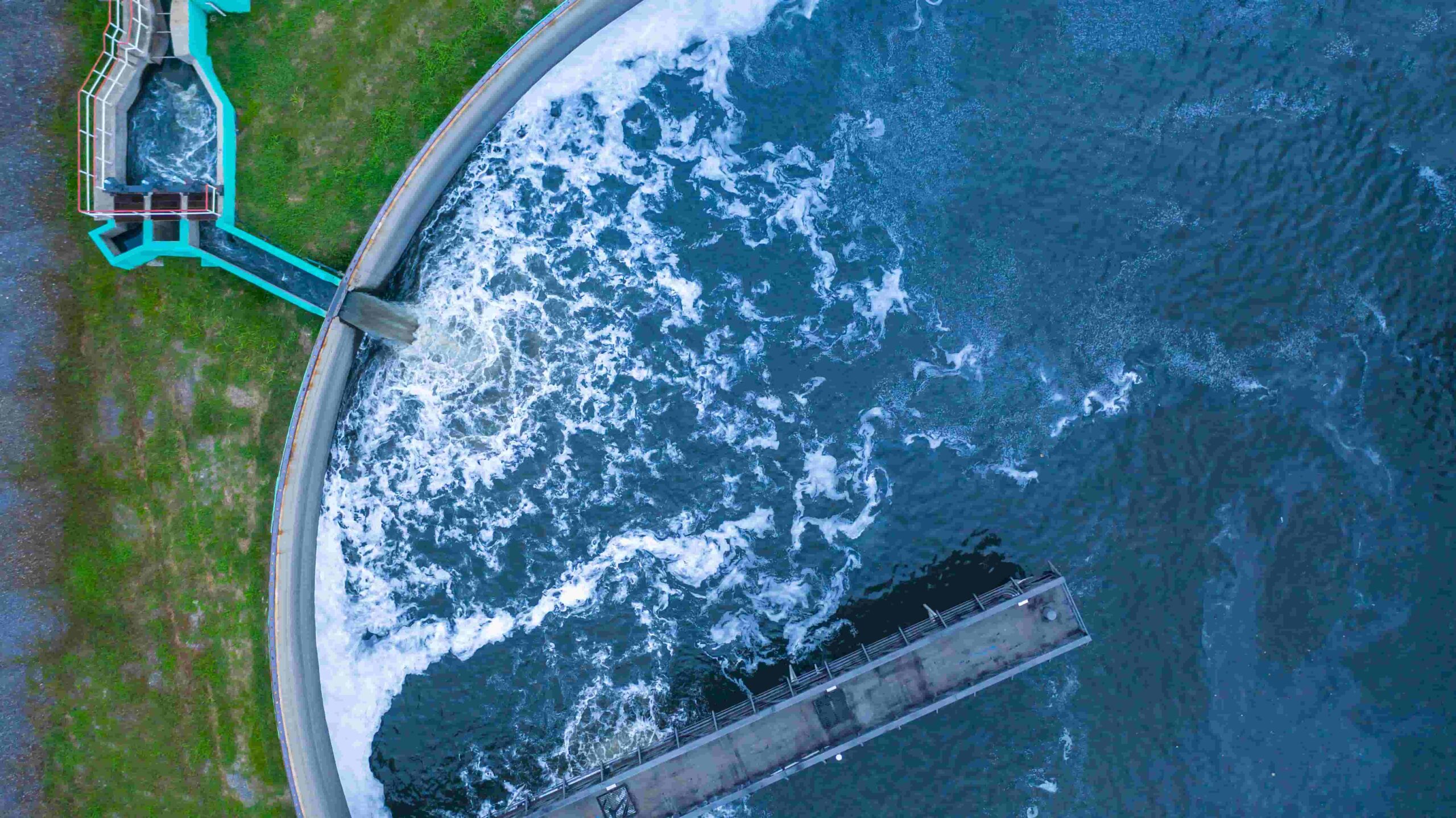
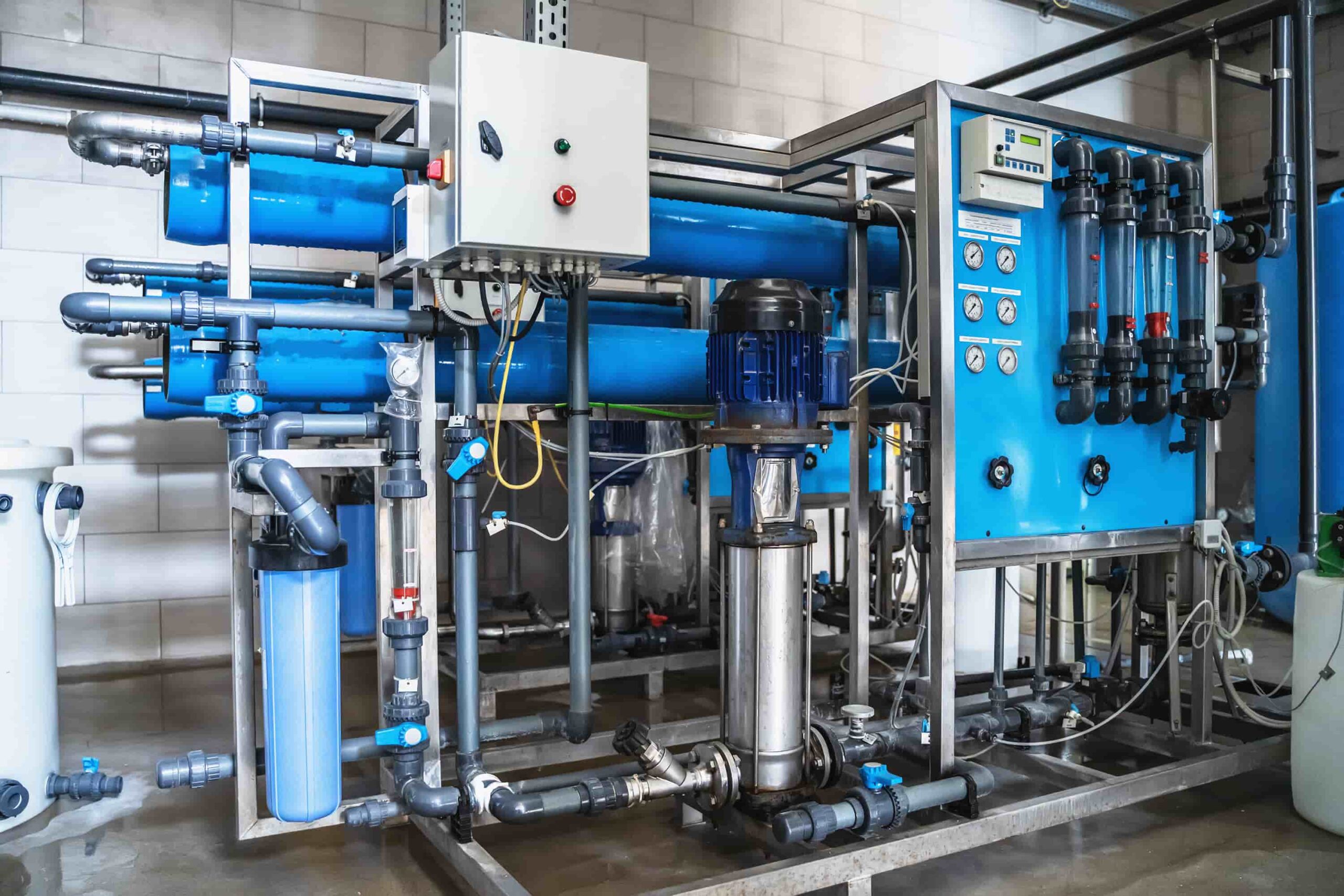
Unfortunately, though, this solution does not account for the possibility of microplastics re-entering the water supply on the journey from the treatment facility to the consumer.
As the research shows, plastic pipes commonly used in homes, offices and other buildings leach microplastics into water, largely negating the efforts to remove plastic particles further up the supply line.
Ultimately, prevention is better than cure; unless plastic materials are phased out where there is a clear risk of contamination – as with water bottles and domestic piping systems – the issue of microplastics in water will not go away.
Alternatives to plastics
There are plenty of alternatives to plastic that not only keep drinking water safe and sterile but also have less of an impact on the environment. Many of these materials predate the emergence of plastics and remain widely available today.
Reusable bottles made of recyclable materials like stainless steel, aluminium and glass have become a popular alternative to single-use plastic bottles, of which it’s estimated in the UK alone 700,00 are littered every day.
With water supply lines, metal pipes made of copper, iron and steel have been used to safely transport water for hundreds of years. Aluminium is another metal that has come into the picture more recently but still predates the rise of plastic pipes in the 1950s and 1960s.
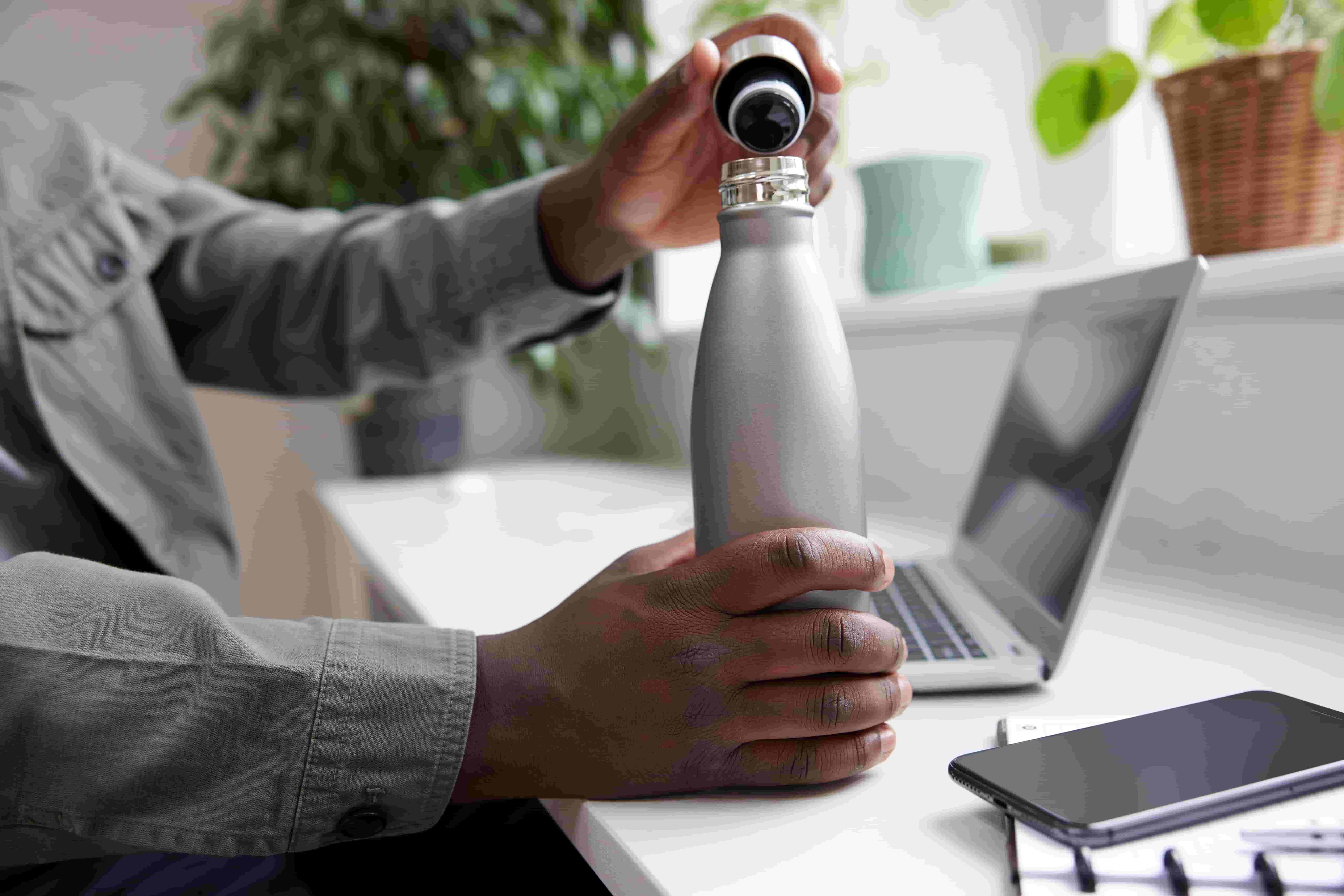
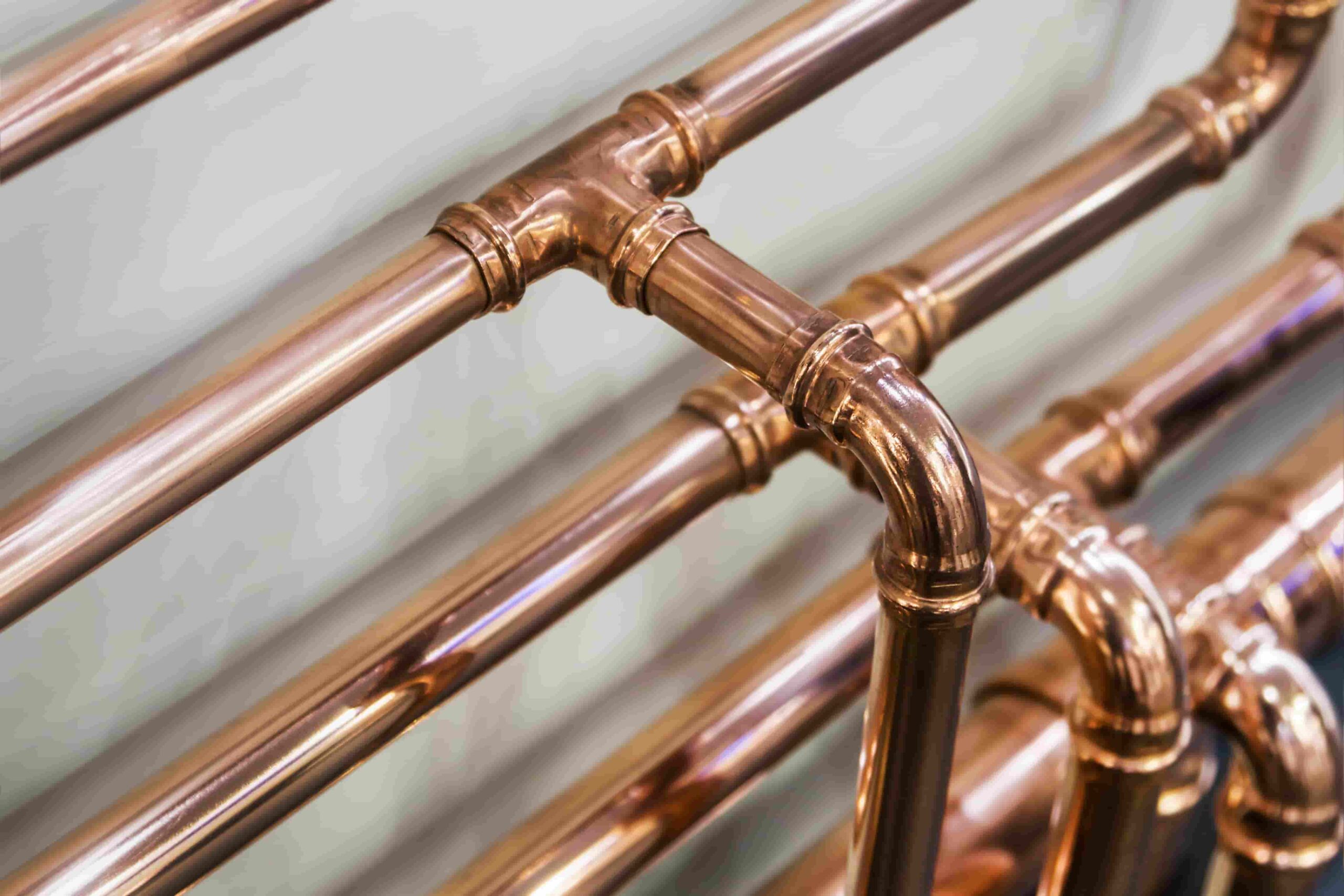
The pace at which plastics have been adopted by various industries makes any effort to phase them out complex and demanding, however the growing body of research into their potential dangers suggests usage should be limited in favour of alternative materials with proven safety credentials.
The banning of lead pipes in the UK in 1969, and subsequent efforts to replace service lines made of the material, have helped save countless lives and potentially millions in public health costs, underlining the impact that collective action can have when clear policies are put in place.
At present, however, there is no clear incentive or obligation for businesses to substitute cheaper plastic materials for the wealth of other, much safer options that are available.
The copper solution
Most homeowners installing a new plumbing system today will be faced with a choice between copper and plastic pipes. Copper pipes often come with a higher installation cost, but across the board they perform better than their plastic counterparts.
In terms of toxicity, copper pipes are unique in that they have a natural resistance to bacteria, viruses and fungi. When microbes land on a copper surface, oxidising atoms are released, pulling electrons from the atoms that make up the microbe’s cell wall until it is destroyed.
Studies into the antimicrobial properties of copper have found that copper alloy surfaces kill 99.9% of common bacteria including MRSA and E. coli within two hours. This is why medical copper pipes are often used in hospitals, where it is vital that contents are kept sterile.


Given that microplastics are often colonised by potentially dangerous bacteria, viruses and fungi, there is reason to believe that the contact-killing properties of copper pipes could reduce the toxicity of water polluted with plastic particles.
What is certain is that copper pipes – as well as well other non-plastic pipes – do not shed microplastics into water, thereby removing the possibility of plastic particles entering water during the journey from the treatment facility to homes, offices and other buildings.
In fact, copper is an essential nutrient that the human body needs to function effectively. The mineral is found in all body tissues, helping to form collagen, connective tissue and red blood cells, absorb iron in the gut and assist enzymes in making energy.
Moving away from plastic piping to natural, non-toxic materials like copper is just one of many measures that can be taken to reduce our already significant exposure to microplastics and guard against a series of potentially life-threatening consequences that are not yet fully understood.
Learn more about the unique properties of copper
Microplastics: a ticking time bomb?
As researchers race to uncover the full extent of microplastics’ impact on human health and the environment, early findings have already raised significant concerns over the widespread use of plastic in society.
Plastic pipes are undoubtedly part of the problem, having been found to leach microplastics into the water they are tasked with transporting, providing a direct route into the human body through drinking water and back into the environment as wastewater.
Fortunately, alternatives to plastic pipes are readily available and have been for hundreds of years. It’s now up to the plumbing industry to weigh the financial savings associated with plastic pipes against the potentially much greater costs that may come with their continued use.
Frequently asked questions
What are microplastics?
Microplastics are small pieces of plastic measuring less than five millimetres in diameter. They stem from the breakdown of plastic products and have been observed across countless environments, raising serious concerns about the environment and human health.
Where do microplastics come from?
Microplastics can come directly from plastic products that are designed intentionally to be small, such as microbeads in cosmetic items. Most microplastics, however, break away from larger plastic objects like clothing, carrier bags and vehicle tyres.
Why are microplastics bad?
Researchers are still working to reveal the full impact of microplastics, however initial findings have linked them to issues with the gut, brain, lungs and reproductive system. In the environment, microplastics have been shown to reduce soil quality and adversely affect biodiversity.
How much microplastics do we consume?
Microplastics enter the human body through a range of food and water sources, as well as the air we breathe. Estimates vary, however most scientists agree the average person consumes at least 50,000 plastic particles annually, while some claim the quantity is as much as five grams per week.
How can you avoid microplastics in water?
Work is underway to develop filtration techniques capable of removing microplastics from water, but for now the most effective measures the average person can take are avoiding plastic water bottles and plastic water pipes, which have both been shown to shed plastic particles.